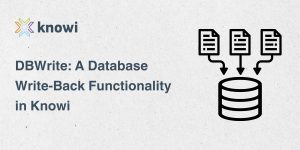The journey to modern data has been fast and furious. Within a just a few decades, we have gone from retrospective analytics on operational data located within your four walls to prescriptive analytics using real-time multi-sourced data and everything in between.
While data, data storage, and data processing technologies have advanced, I would argue that most analytics platforms are still playing to catch up, specifically when it comes to analytics using unstructured data sources.
Many organizations have figured out that moving, flattening and aggregating unstructured data so it can be loaded into relational tables is not a good long-term solution. It adds unnecessary complexity to already complex architectures. It forces the business to decide ahead of time what data they want to see. It impacts the fidelity of the data.
To pile on, business teams are greedy. They want the same self-service they get with SQL friendly desktop tool but avoid heavy processes like ETL because it adds weeks to their analytics projects.
So how do you architect a modern analytics platform that supports polyglot persistence strategies and business-driven analytics? It’s a hard problem to solve, but done right can transform the business.
Having been involved in hundreds of such projects, we’ve come up with a list of 7 requirements to deliver business-driven analytics on modern data architectures.
#1 – Stop Moving Your Data Around
In the age of polyglot persistence, native integration with NoSQL data sources eliminates pre-defined data constraints and performance issues that are a by-product of moving, flattening and aggregating unstructured data so it can be loaded into relational tables structures.
#2 – Data Discovery Across Sources
Ideally, the complexity of the underlying data architecture is hidden from the data engineer and they just configure new data sources and start exploring, including joining multi-sourced and differently structured data together to created blended data sets and the ability to visualize the results immediately.
#3 – Shift to an Agile Analytics Approach
First, let data engineers take over the creation and management of datasets. Second, shift development to an agile iterative approach.
#4 – Enable Self-Service for All Data
In modern architectures, all data is equal and advanced analytics platforms should enable the same level of business self-service on NoSQL, SQL, RDMS or file-based data sources.
#5 -Embed Analytics in Data Applications
Embedding analytics in data applications not only makes it easier for the business to integrate Big Data into their decision-making processes, but it also makes their decisions data driven.
#6 – Drive Action Not Just Insights
Using advanced analytics is how many business leaders believe they will deliver business transformation and growth so even if you are not there yet plan for .
#7 – Ensure Enterprise Readiness
The business is relying on this data to make decisions. Some processes need to be layered into the platform to ensure it is reliable, scalable, secure and fault-tolerant.
We generally see high levels of success and higher user adoption rates when these requirements are delivered. Our customers also report over a 10x reduction in analytics project implementation time and rework.
For more detail on these requirements and how we narrowed it down to these seven, download our free whitepaper Business-DrivenAnalytics in the Modern Data Age or click button below.






